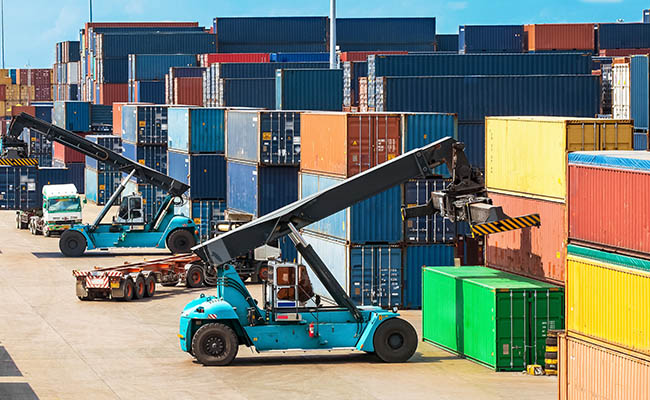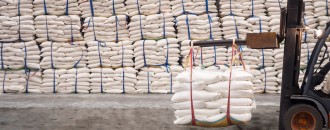
Govt considering steps to revive exports from SEZs
 Blaming several policy-related decisions for declining exports from special economic zones (SEZs), industry experts have asked the government to take pro-exports measures to revive stalled shipments from such zones.
According to P C Nambiar, Chairman, Export Promotion Council for EOUs (export oriented units) & SEZs, the government has taken some “half-built decisions” in the past without considering their long term impacts. But now, authorities are ready to make changes in order to revive the export sector.
“The frequent advance amendments to the trade policy provision incentives made by the finance department, revenue department and commerce department are a root cause of the slow growth of SEZs in India. But the government is considering the change and we are meeting next week to figure that out,” Nambiar told the Dollar Business.
Exports from SEZs have been on a sluggish trend for over two years. Nambiar stressed that the SEZs have had plenty of issues in regards to exports, and the government’s policies have been inefficient to deal with them.
“For one, the state governments’ policies are not in line with the policy of the central government. The condition is that we shall not export taxes, but exports from India carry state taxes to a great extent,” Nambiar said.
Second, the SEZs have to face more problems in shipping goods than those faced by exporters of a domestic tariff area (DTA). For DTA exporters (general exporters), every transaction is recorded under EDI (electronic data interchange), whereas the SEZs are not interconnected with the ports that have EDI facilities. Documentation process is also cumbersome. So, ease of doing business is not achieved, Nambiar pointed out.
Besides, there is a liquidity problem. Indian exporters are competing with those of the US, Europe, Australia and the developing Asian countries. “The average interest rate on financing exports in India is almost 14%, whereas it is 2-3% outside India, which makes our price less competitive.”
Nambiar suggested that one way to boost sales from the SEZs was to identify products that could be sold in domestic tariff areas with lesser import duty. He said the duty should be levied at par with the rates applicable on shipments from countries having free trade agreements (FTAs) with India.
The Commerce Ministry is also said to have sent a similar proposal to the Finance Ministry, seeking permission for SEZ units to sell products in the domestic markets at FTA rate.
Experts believe that people prefer buying imported goods that cost less than those manufactured in SEZs. Manufacturing units operating from SEZs are unable to offer competitive price due to inverted duty structure.
“When such goods are sold in India, they attract higher rate of duty compared to the duty payable on similar goods imported from FTA countries,” Nambiar said.
However, the government’s recent efforts to encourage domestic manufacturing have evoked a sense of optimism among the industry.
Of the total SEZs approved by the government since 2006, around 300 have been notified but only about 200 are currently operational.
Blaming several policy-related decisions for declining exports from special economic zones (SEZs), industry experts have asked the government to take pro-exports measures to revive stalled shipments from such zones.
According to P C Nambiar, Chairman, Export Promotion Council for EOUs (export oriented units) & SEZs, the government has taken some “half-built decisions” in the past without considering their long term impacts. But now, authorities are ready to make changes in order to revive the export sector.
“The frequent advance amendments to the trade policy provision incentives made by the finance department, revenue department and commerce department are a root cause of the slow growth of SEZs in India. But the government is considering the change and we are meeting next week to figure that out,” Nambiar told the Dollar Business.
Exports from SEZs have been on a sluggish trend for over two years. Nambiar stressed that the SEZs have had plenty of issues in regards to exports, and the government’s policies have been inefficient to deal with them.
“For one, the state governments’ policies are not in line with the policy of the central government. The condition is that we shall not export taxes, but exports from India carry state taxes to a great extent,” Nambiar said.
Second, the SEZs have to face more problems in shipping goods than those faced by exporters of a domestic tariff area (DTA). For DTA exporters (general exporters), every transaction is recorded under EDI (electronic data interchange), whereas the SEZs are not interconnected with the ports that have EDI facilities. Documentation process is also cumbersome. So, ease of doing business is not achieved, Nambiar pointed out.
Besides, there is a liquidity problem. Indian exporters are competing with those of the US, Europe, Australia and the developing Asian countries. “The average interest rate on financing exports in India is almost 14%, whereas it is 2-3% outside India, which makes our price less competitive.”
Nambiar suggested that one way to boost sales from the SEZs was to identify products that could be sold in domestic tariff areas with lesser import duty. He said the duty should be levied at par with the rates applicable on shipments from countries having free trade agreements (FTAs) with India.
The Commerce Ministry is also said to have sent a similar proposal to the Finance Ministry, seeking permission for SEZ units to sell products in the domestic markets at FTA rate.
Experts believe that people prefer buying imported goods that cost less than those manufactured in SEZs. Manufacturing units operating from SEZs are unable to offer competitive price due to inverted duty structure.
“When such goods are sold in India, they attract higher rate of duty compared to the duty payable on similar goods imported from FTA countries,” Nambiar said.
However, the government’s recent efforts to encourage domestic manufacturing have evoked a sense of optimism among the industry.
Of the total SEZs approved by the government since 2006, around 300 have been notified but only about 200 are currently operational.
December 03, 2015 | 4:30pm IST






 to success.
to success.